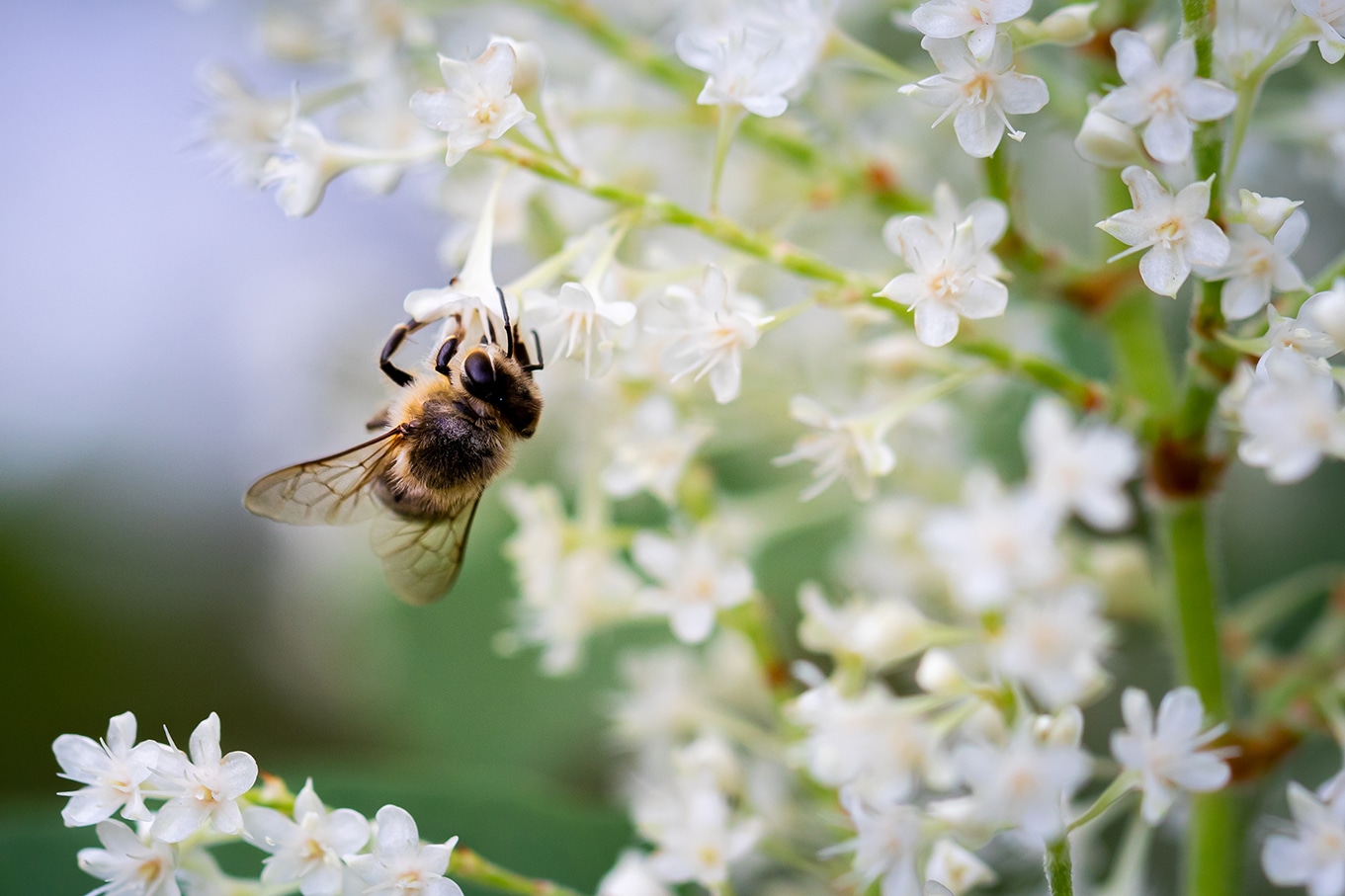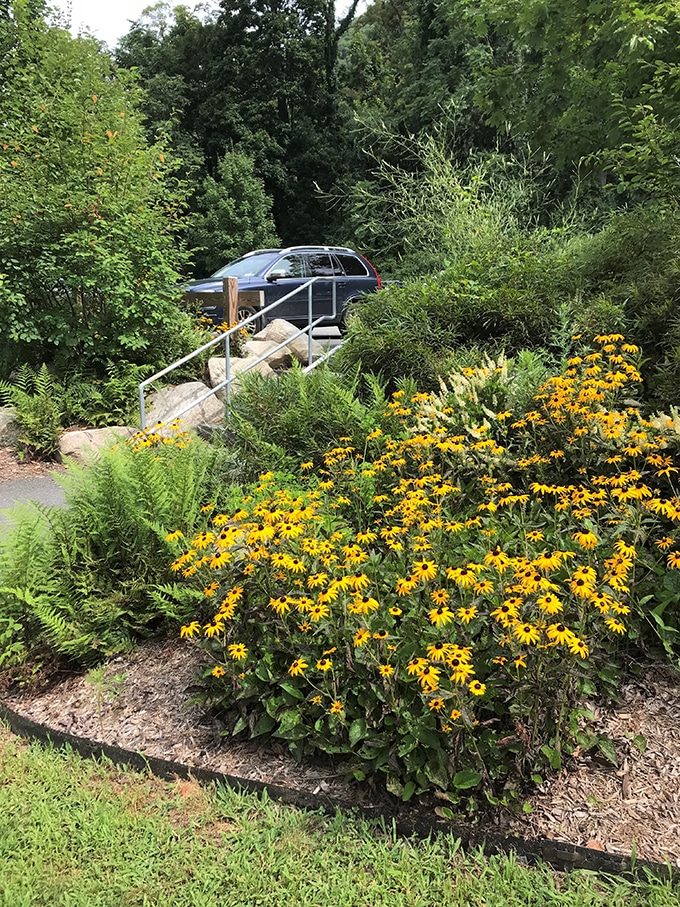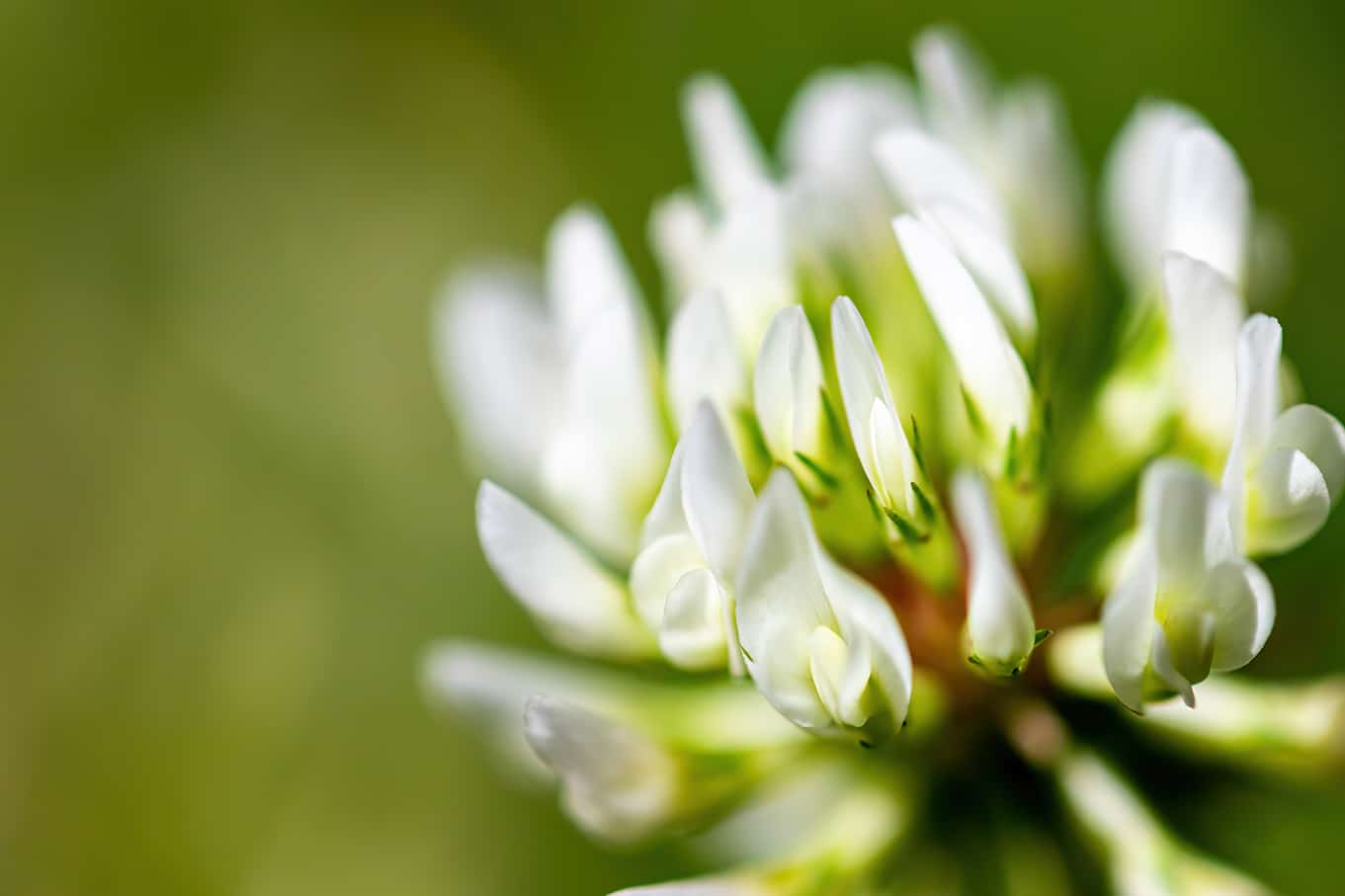A solid green carpet of neatly cut grass has become a classic landscaping choice, and many of us have grown up accepting this. Long and uninterrupted fields of evenly cut grass is the trademark of almost every neighborhood. Although they are a signature amongst many homeowners in Connecticut, there has been a movement to abandon this norm.
One of these ‘lawn revolutionaries’ is Louise Washer, President of the Norwalk River Watershed Association, and Treasurer of Pollinator Pathways.
“I had been focused on protecting water quality for about 10 years, and one of my big issues is when people use pesticides on their lawns,” said Washer. “I’d been worried about that for a long time, so when I started talking to these ‘plant people’ I began to make the connection of ‘Oh, if we make these changes [refrain from chemical use] this is going to have the effect on water quality that I’ve always wanted.’”
 A pesticide-free lawn is a key characteristic of a Pollinator Pathway – a corridor of native plants that provide nutrition and habitat for pollinators, such as butterflies, hummingbirds, and bees. Honeybees, for example, are among the most numerous and effective pollinator species in the world and are responsible for pollinating much of our crops, but have been experiencing a sharp decline in populations that can be slowed with healthy native area free of chemicals.
A pesticide-free lawn is a key characteristic of a Pollinator Pathway – a corridor of native plants that provide nutrition and habitat for pollinators, such as butterflies, hummingbirds, and bees. Honeybees, for example, are among the most numerous and effective pollinator species in the world and are responsible for pollinating much of our crops, but have been experiencing a sharp decline in populations that can be slowed with healthy native area free of chemicals.
The Pollinator Pathway organization in Ridgefield has done a lot to ensure a healthy, pesticide-free passage for pollinators, with plant boxes on Main St. in Ridgefield and native gardens all over the area.
To create such a beneficial environment in your own backyard, Jack Sanders, former editor of the Ridgefield Press and author of Hedgemaids & Fairy Candles: The Lives and Lore of North American Wildflowers, encourages homeowners to simply let weeds grow instead of applying herbicides.
“A weed is a very successful wildflower,” Sanders says. “It doesn’t require more work to have a natural lawn, it’s just that you’re not treating the lawn with chemicals to keep out what people call weeds.”
David McCarthy, Executive Director of the Wilton Land Conservation Trust, is another supporter of chemical-free yards. “An organic lawn is something that’s more sustainable over the long term,” explains McCarthy. “When you introduce things like pesticides, herbicides, and you’re spreading those around you are basically creating a dead zone.”
Fertilizers have also wreaked havoc outside the confines of a yard. Chris Schipper, Chair of the New Canaan Conservation Commission, has seen the impacts of chemical fertilizers firsthand.
“We’ve identified areas where runoff from properties upstream are affecting the health of the pond [in Bristow Park], and the algae blooms that are occurring,” explained Schipper. “Because people are putting too much [fertilizer] down, it’s leaching into the water supply.”
Robin Bates-Mason, Team Leader of Sustainable Connecticut, and member of Planet New Canaan, stresses the importance of soil testing before applying fertilizer to avoid situations like the one in Bristow Park. She not only finds fertilizer unnecessary but thinks many who use it overlook a very simple natural solution; mowing the lawn the mulch the grass and leaves back into it, providing nitrogen through a carbon-based compost. Another way to avoid using chemical fertilizer is to plant natives.
“The thing about natives, is that they won’t need fertilizer, and after they’re established, they won’t need water. They’re from here. They know this climate, they know this weather,’ said McCarthy. “Sustaining these artificial foreign ecosystems in your yard is just not great.”
Sarah Breznen, Director of Education at the Woodcock Nature Center, stresses the importance of researching specific native plants. “The pollinator pathway is a great resource, and I would always urge everyone to go on there because they have a list of plants, what habitat they’re good for, when they bloom, what host species use them,” says Breznen. “So, they can kind of pick what would be most beneficial for their backyard.”
Turfgrass itself is a foreign ecosystem that requires quite a bit of maintenance if a homeowner wants it to look perfect, especially in the hot summer, explained Bates-Mason, who prefers clover in her yard. “I actually plant clover—which also isn’t native—and have a lawn of just flowers; white clover flowers,” explains Bates-Mason. “It is just buzzing with life, and that’s something that’s important to me.”
 Since turfgrass isn’t native, that provides all the more reason to leave leaf litter for our insects, thinks Breznen.
Since turfgrass isn’t native, that provides all the more reason to leave leaf litter for our insects, thinks Breznen.
“Leave the leaves is another big one,” she said. “You can still rake the leaves off the lawn where your kids are going to play but have an area in your lawn where you leave those leaves because a lot of butterflies and moths overwinter [the dormant ‘hibernation’ state insects go into over winter] in them.”
Another step that can be taken to help native insects is to cut back on lawn mowing. “There’s this really cool thing called No Mow May,” explains McCarthy. “In May, a lot of the plants support those early pollinator species that if you mow, you wouldn’t be providing them with the food they require. So, if you don’t mow your lawn in May it’s going to look tall, but it’ll be beautiful and will
support nature.”
With less lawn mowing comes the idea of having less lawn overall. “What I would say is simply, don’t think you’re going to convert your whole lawn into a meadow or into a native plant garden,” Says Schipper. “Just start with a segment of it [yard] and see how pretty it could be as you plant some of the native flowers or plants or fruit bearing shrubs.”
Washer used this process when converting her lawn to a more natural space. “I’ve done that, and I’ve tried different shapes for the part of the lawn I let grow,” she explained. “Over time I’ve added wildflowers to that and [it looks] like little mini meadows.
A concern some may share when transferring to a natural lawn is diminishing curb appeal. However, Wayne Gura, co-chair of the Wilton Garden Club’s conservation committee, sees the beauty of a natural lawn as unmatched.
“We personally think that sustainability is curb appeal. But if it’s not your thing, what we’ve read as a rule of thumb is that you can be 70% native [plants] and 30% introduced [plants] and still have a haven that sustains wildlife.”
Anne Djupedal Gura, co-chair of the Wilton Garden Club’s conservation committee, also sees the beauty in a native yard. “The flowers are lovely! Lovely enough to have been collected, cultivated, and featured in the great botanical gardens and garden estates of Europe and elsewhere.”
 This area is well-known as a great place to raise a family. After what seems like an eternity of virtual classes, screen time, and restrictions, embarking on this outdoor journey not only benefits the environment but fosters a down-to-earth learning environment for the whole family, right in our own backyards.
This area is well-known as a great place to raise a family. After what seems like an eternity of virtual classes, screen time, and restrictions, embarking on this outdoor journey not only benefits the environment but fosters a down-to-earth learning environment for the whole family, right in our own backyards.
“It’s an opportunity to experience nature right here,” says Shipper. “My sense is if you’re young and you get exposed to nature it stays with you for life. Frankly, we’re on this planet, we’ve got to learn how to appreciate what nature has given us.” •